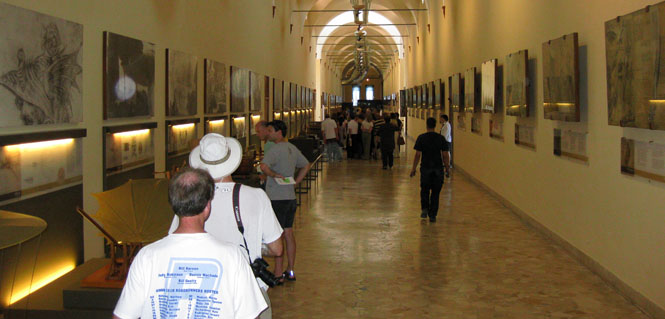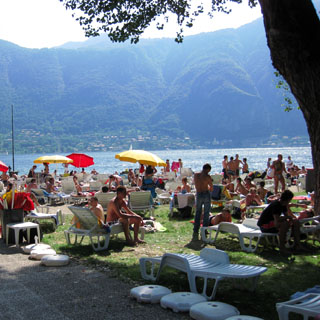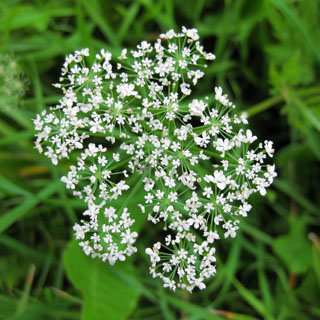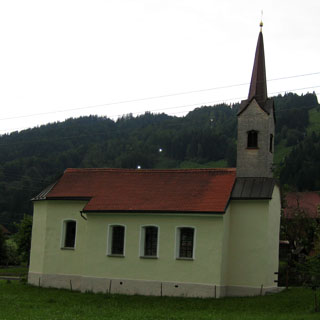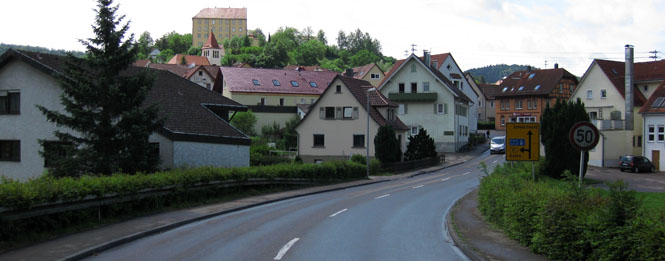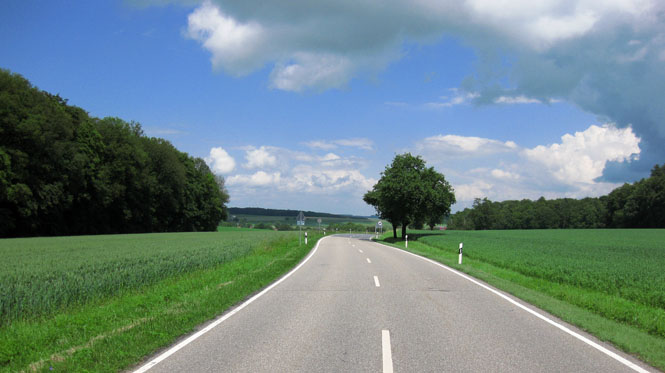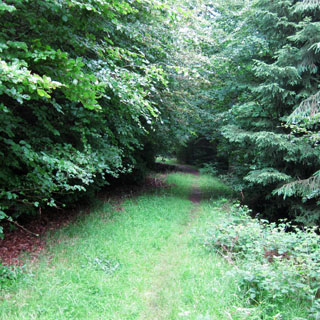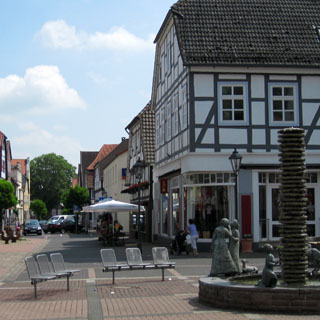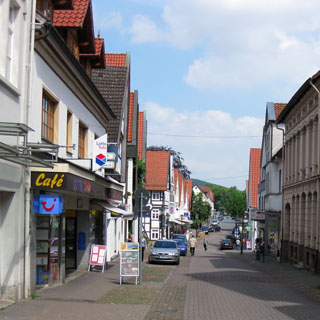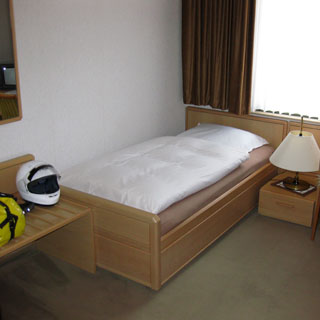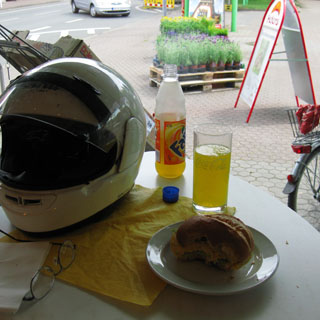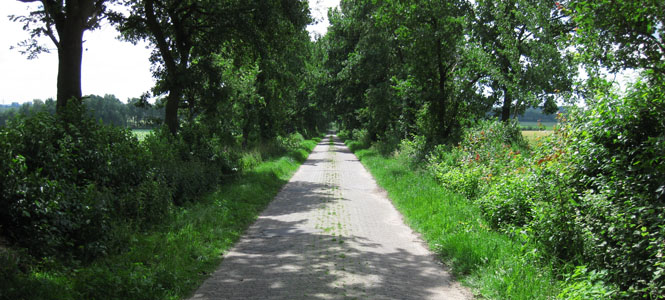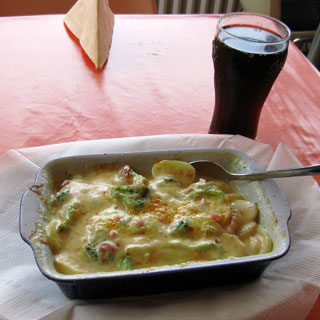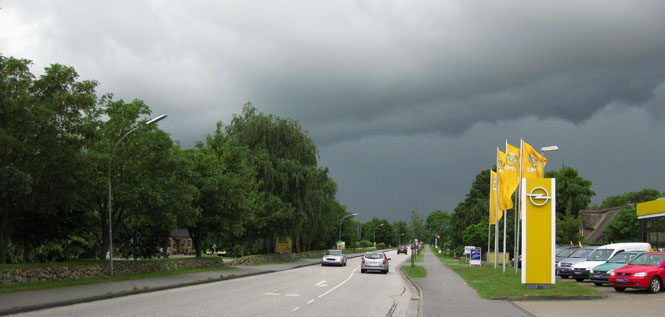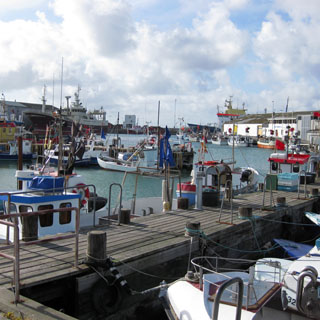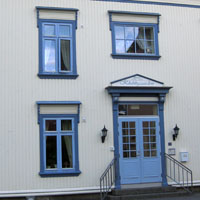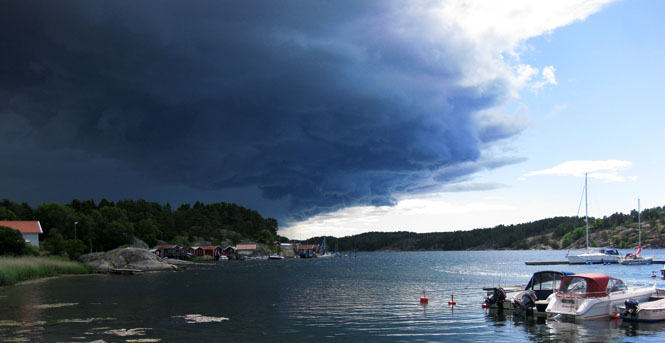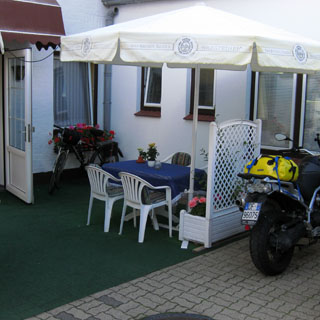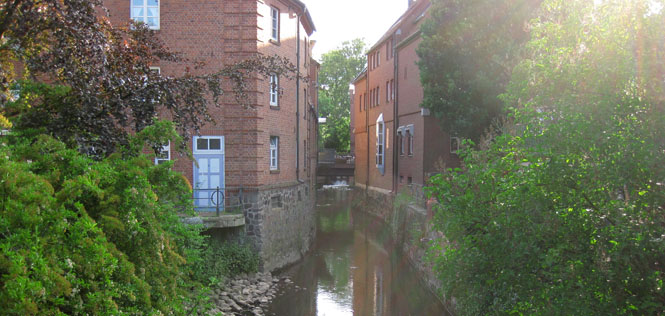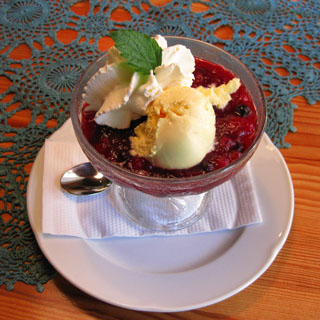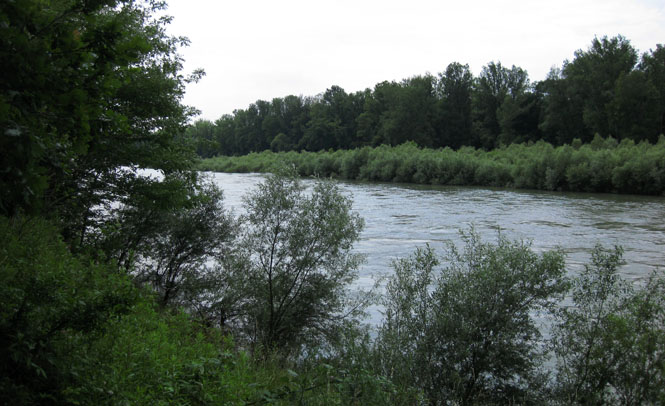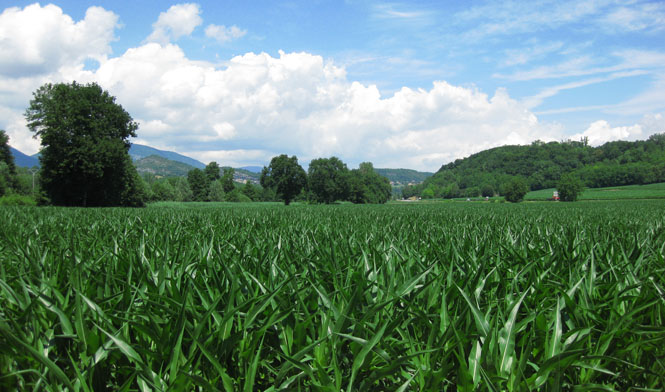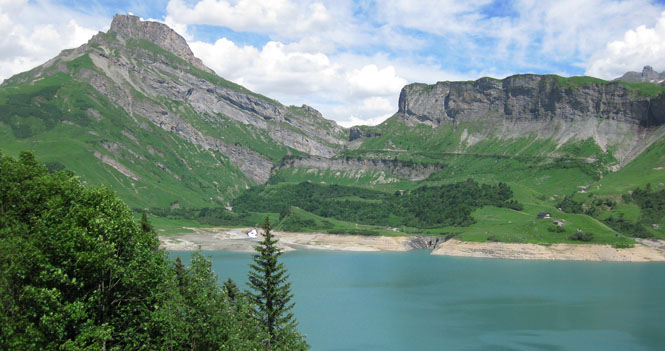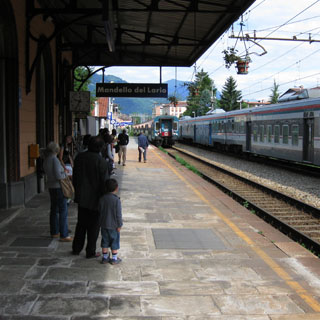


 June, 2009
June, 2009
Sunday |
Monday |
Tuesday |
Wednesday |
Thursday |
Friday |
Saturday |
7 June |
8 |
9 |
10 |
11 |
12
|
13
|
14
|
15
|
16
|
17
|
18
|
19
|
20
|
21
|
22
|
23
|
24
|
25
|
26
|
27
|
28 |
29 |
30 |
1 July |
2 |
3 |
4 |

 Europe Motorcycle Trip #3
Europe Motorcycle Trip #3
I had explored northern Italy on a previous trip, and Switzerland just eight months ago. Those were excellent trips, but I wanted to stretch things out for this one--actually point the bike a direction and really go someplace.
The basic goal was Norway, although I didn't expect to get that far. But in general, that's the direction I had in mind. I hadn't given the return trip any thought; I'd work that out when I got there.
 Kansas
Kansas
Preparation was much the same as other trips with the exception that I did not want to use saddle bags or a rear trunk. I wanted to pack just the bare minimum.
Of course, I would again be renting a Moto Guzzi (Stelvio) from Agostini Mandello with the help of Alis (and Alby, the new boss).
I took waterproof, laminated maps of all the countries I thought I might be in, but left all other references at home. I used a local Moto Guzzi Stelvio (at Motorsports Honda in Wichita) as a template to cut some straps for my waterproof duffle bag. I would take no Bungee cords.
 Italy
Italy
Wichita to Houston to Newark to Milan. It's a long day.

Checking through customs and Immigration at Malpensa Airport has always been a breeze. I don't think I even ever had to stop walking to stand in a line.

A new hotel for this trip: The Mokinba King Hotel. This hotel is even closer to the train/metro station than what I had used previously. That they lost my reservation on the return leg is not promising, but even so, it's a recommended place to stay. Don't expect a large room.


The Pinacoteca di Brera is one of the top art museums in all of Italy. There is no consistency with this, but no photography was allowed in the galleries. The building is an enormous sprawling thing that seems to contain all sorts of galleries and classrooms and who knows what else.


The Museo Nazionale della Scienza a della Tecnologia covers all sorts of stuff. Everything, that is, except art.
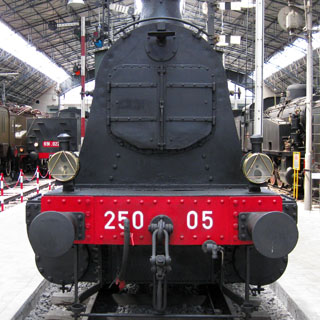

It's nice that somebody salvaged these figure heads from decommissioned sailing ships.





Wire and pipe making was once (perhaps still is?) an important industry in the area. Some 19th century equipment was on display.


There were some remarkable clocks and astronomy instruments.
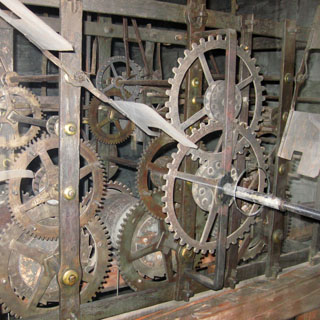


A feature of the museum is their exhibit of models of Leonardo da Vinci industrial items. Some were things that were built in his time, and others were from sketches that never were taken to completion. Of course, it follows that some were terribly impractical or even impossible, but most were entirely plausible and useful things. The water powered saw mill (below, right), is interesting as it is the same type as was used at Sutter's Mill where gold was first discovered in California (200 years later).

Dozens of attractive young women with numbers hanging from their neck receiving some sort of instruction. I have no idea...
...here's the explanation.
The Civico Museo Archeologico presents a view of Milan back into Roman times. I especially liked the large map that shows Roman buildings on a map of Milan. A surprising number of many of these very old structures still exist--tucked away in corners of modern Milan.

Two remnants of the old chariot racing grounds.

Just next door is the San Maurizio al Monastero Maggiore. Nothing from the outside prepares you for the inside--stunning. A very nice 3D view of the interior is available here.

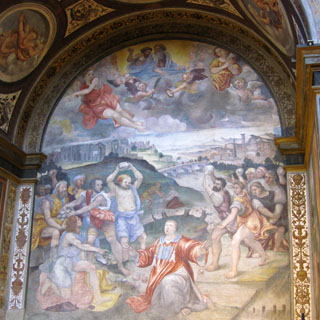
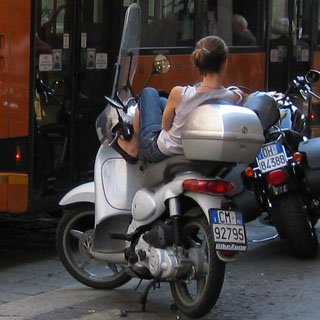

Not so early the next day, I was on the metro, then train, to Mandello del Lario.


Mandello del Lario. It's an easy walk from the train station to the lake where I'd be staying at Mamma Ciccia's, as before. I would spend the rest of the day relaxing at the lake and walking around the small town.





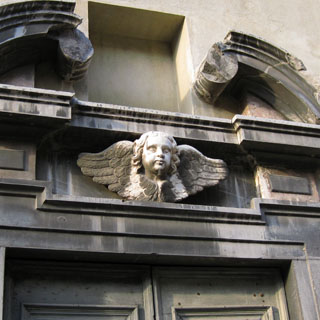
The most direct route north is over Splüga pass. This is Isola, Italy, not far from the top.
 Switzerland
Switzerland
As is usual these days, the border was open and the crossing was unmanned.

I avoided the main road, but kept to the older roads that dance around the newer route. The new road runs through the mountains in long tunnels. The old roads find their way the best they can.
Cazis. I bought a sticker that would allow me to ride the A's (Autostrada).

I knew nothing about the Tour of Switzerland bicycle race. Apparently it's a Big Thing. There were only a few riders at the front. Then there was a fair gap to the next larger group. Then, still further back was a massive bunch of all the other riders. I would later read that the overall winner was Fabian Cancellara (who is Swiss and the current Olympic gold medalist).

Landquart. I stopped at the market to pick up some bread and cheese. Then I noticed that they had fresh sandwiches already made. Add a bottle of Rivella, and I was all set for your classic Swiss lunch.

 Liechtenstein
Liechtenstein

 Austria
Austria
Beyond Liechtenstein the traffic was bad and only getting worse. Stop-and-go for miles and miles. Something had to change. Earlier, I had planned to cross into Germany at Lake Constance, but I wasn't going to put up with much more of this. So just as soon as any road showed itself to go east, I took it. Better. Much better.
Alleschwende.

 Germany
Germany
I followed a number of smaller roads that led generally north (and sometimes didn't lead anywhere). It was starting to rain, so Ratholz is where I stopped for the night.

All trips mostly followed the same pattern: Find a place for the night by around 6:30, and spend the next hour, or so, walking around the neighborhood. As I was packing only a single change of clothes, the first thing to do (before heading out) was to put the previous day's change into the bathroom sink to soak.
I packed a rubber sink stopper (just a 4" flat rubber disk), as you can never rely on the standard sink stopper to hold water for very long. I would let things soak for at least an hour and then squish them around for a bit before rinsing. I would generally roll the shirt in a towel, but even that wasn't necessary. Things were always completely dry by the next morning. What I wore for the day would go in a plastic bag for washing the next evening.


I walked these railroad tracks, not paying too much attention to what might be coming. When I noticed the cross-bars were lowering up ahead (where a road crossed the tracks), I still didn't see a train. But, I stepped aside, just the same. And, then this short four-car train came whizzing by at a very high speed making almost no noise at all. Oh, my! I think I'll be more careful the next time.



It was raining quite heavily the next morning, so I skipped the smaller roads and picked up the autobahn. Might as well make some time if I can't stop to look around. When the rain cleared, I moved over to the secondary roads, but it still took awhile to clear away from the heavily industrial area.
This is Oberkochen.
Rosengarten. By now, I had left all the heavy industry behind, and had somewhat figured out which roads would be the ones I'd want. I did my best to avoid populated areas.

Lauda.

I wasn't exactly sure where I was at this point, but the hills were beautiful and the roads were empty, so I just kept riding in the same general direction. I had already noticed that no matter how small the town, there was always a guest house available.

Hosenfeld. There were rarely large signs identifying the guest houses or hotels, but you could usually spot the beer signs, which amount to the same thing.

Checking into the hotels in Germany was the easiest--by far. On arriving and explaining what I needed, I was always shown to the room and then given the key. That's it. Nobody ever asked for my name or my address or asked to see my passport. The next morning I paid my bill (in cash) and that was it. No paperwork.
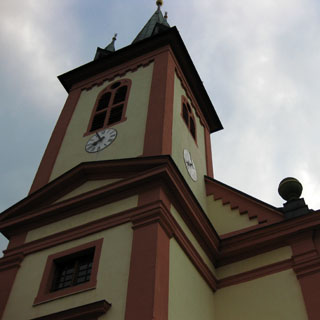
I don't think you could call Döner a strictly German food, but by any practical measure, it is. I gather it was brought by Turkish laborers after the war, and is now seemingly more popular than more conventional (by American standards) fast food.


A routine intersection that I sometimes struggled to figure out.
Germany has the irritating system of putting traffic lights directly above the line where you stop. This means you cannot see the overhead light if you are first in line. To get around this, there is often a separate, much lower light pole off to the right side that you can see. Of course, this means that your eyes are focused to the side of the road, and not in front of you. There were some cases where I would come to a stop, only to realize that I could not see the traffic light at all. Other countries didn't do this, and put the lights across the intersection, which solves all problems with less traffic light equipment needed.
I stopped at Edersee National Park and hiked for a couple of miles. This is a beautiful area.

An orange flavored cola drink seems to be one of the more popular soft drinks. The one on the left is from Coke, and the one on the right is from Pepsi (although you would need to read the fine print to know that). I thought they tasted like Coke mixed with Orange Crush.

Brakel. There were a few towns that clearly were aiming themselves at tour-bus traffic. I tried to avoid those. But, really, all the towns in this region were very attractive, and all seemed to have very nice business sections, often with pedestrian-only streets.


Blomberg. This town turned out to be one of those tour-bus towns that I was trying to avoid.



I saw lots of fields of strawberries. Many, like this one, offered people the options of picking their own. Spargel is asparagus. The significant difference is that asparagus in Germany is white (?). The pairing of asparagus and strawberries might seem an odd one (at least it seemed odd to me), but that's how it was often done.

As usual, I wasn't sure what I had ordered until it came. In this case, I apparently ordered the Schnitzel equivalent of the Combination #1 plate at a Mexican restaurant. Kakao? It's just chocolate milk (I guess). Would you like a large dollop of mayonnaise on your fries? I must have said 'yes.'

Eisbergen.
Leese is not an especially large town, but as always, there was a hotel downtown. I don't think that finding a place to stay the night would ever be a problem.


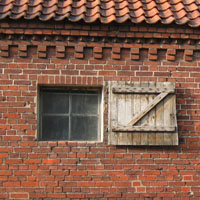




I looked exactly like this every day. I only had two shirts, one grey and one grey-blue. I had a long-sleeve (black) T-shirt for cooler days, and short-sleeve (also black) for the rest. Everything was selected to dry very quickly--always over night. My belt is also a spare tie-down strap, but I never needed to use it for that purpose. The pouch on my belt is for the camera, and is water-proof (except for the zipper).

Verden. The cathedral had an amazingly tall roof line, which you could see from miles away. It dates from the 12th century. That's the Aller River.


I would love to have climbed above the ceiling to see how the roof was constructed. While the interior is very tall, it's not nearly as tall as the outside roof. The walls do not have wide buttresses, so the roof would have to be internally braced. I would expect to see some impressively big beams.



My route was devised to avoid riding through Hamburg (which I would avoid at nearly any cost). That meant, that I would cross the Elbe on a ferry. The line to cross to the north was short. The line to cross to the south was a mile long. I took note of that.

Windmills such as these were very common everywhere. Actually, these are fairly small ones. I saw some that were as large as I've ever seen. Clearly wind generation is taken very seriously.
Meldorf.


Bredstedt.



In most cases, the strawberry booth also had an asparagus sign built into the side. This one seems to be pure strawberry.
I couldn't tell you what I ordered (almost always the case). It was fully vegetarian and really quite good. Mostly potato, I believe, but I couldn't say what else. As was usual, there is no ice in the glass.

The stacked pigs are probably right out of the artist's mind. But, I'm guessing that the fox and rabbit are part of a well-known story (which is not well-known to me).
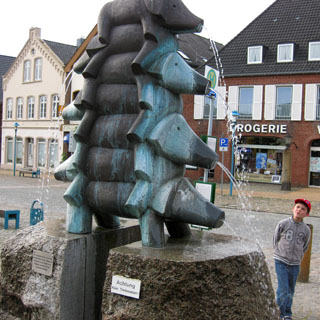


Thatched roofs were fairly common, or at least not uncommon.



Things looked pretty grim north towards Denmark. I encountered several fronts like this one. They always looked much worse than they were. I would ride in rain (sometimes heavy) for about thirty minutes, but then things would clear, and the day would look more promising.
It was looking increasingly like it would not be possible to continue as far as Norway. I had a route picked out where I would loop around Denmark before heading south. But the further north I rode, the more I became committed to going all the way. I knew that I was forcing myself to run at least a couple of future days harder than I'd like, with fewer stops.
 Denmark
Denmark

Lustrup. I stopped at a Viking museum, which turned out to be a living Viking farm. Serious attempts were made to use only the tools and technologies that were available around the year 800.







There was to be a falconry demonstration, but I did not stay long enough to see it. These guys (below) look ready to go.



Working the fuel pumps was not normally a problem, but there were a couple of times that I was completely baffled. Even without knowing the language you can usually tell what order things need to be done and when it wants your PIN number. I was always double and triple checking that I was not pumping diesel fuel. In the US, green pump handles almost always indicate diesel. That wasn't the case, here.
Denmark, Norway, Sweden and Switzerland all use their own currency; not the Euro. I think you could probably get by with spending just Euros, but your change would probably still be in the local currency. An advantage of the Kroner (same name, different currency in each of the Scandinavian countries) is that the units were much higher than Euros, meaning paper bills were almost always sufficient. I noticed that prices were often rounded up or down to avoid coins. This meant less of a problem with accumulating a pocket full of change. Fuel in Switzerland has the worst smell of all the countries I was to ride in. Everywhere was self-service (as would be expected) except one station where the attendant insisted. I let him and he then proceeded to practically hose down the bike with raw fuel as he overfilled the tank. When he tried to then dry it with a very coarse paper towel (with embedded wood chips) I quickly put a stop to his "help."


This was a great day for riding. Quite cool (as I prefer), not much traffic, and really interesting scenery. I walked several yards into this field of barley (I'm guessing) for this shot. I was impressed that the grain was waist high.

Brovst.
I often had no idea what I might be ordering. In this case, I was pretty sure I didn't order this, but still, I must have. Anyway, whatever sort of bird it once was (chicken I presume), it was good.

Hirtshals. I started the day fully expecting not to cross over to Norway. But, by the end of the day I was in Hirtshals and was fully committed.
Before the trip, I had checked that there were regular ferry trips leaving Hirtshals. I didn't do any more preparation than that. So, I was a bit lost when I arrived. There were two ferry companies, and further, it wasn't clear how it all worked. No matter. I found the ticket office on the second floor of this building, and after talking over my options with the very helpful attendant, I bought a ticket for the next morning.




As is generally the case for ferries of this size, motorcycles are "first on, first off." That's for the best since motorcycles have special needs, and don't mix well with cars.

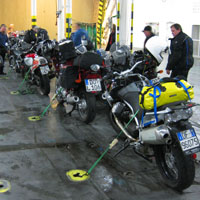
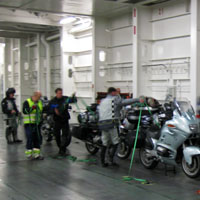
The crossing takes a few hours.



 Norway
Norway
I didn't plan to spend any time in Kristiandsand. After rolling off the boat, I'd pick up the main highway north out of the city.

Kristiandsand.
By this time, I'd fully sorted how best to pack the bag and strap it down.
My shoes are placed lengthwise with the soles against the sides--forward and rear (giving a rigid, flat surface from the outside). Two toiletries bags are at either end. The spare clothing along with a 3/4 waterproof jacket and the warmer polartech jacket fill out the middle, and the SPOT gps tracking unit sits on top in the middle with the antennae facing up. I tucked away all the loose ends of the straps to keep things from waving around. The duffle bag makes a nice stop for the small of my back while riding. It is completely waterproof, and can quickly be removed for the night.


The steeples of Denmark churches have a folded roof (much like a house) while those in Norway come to a point (there are plenty of exceptions, of course).

Larvik.
This was the more luxurious hotel I stayed in during the trip.
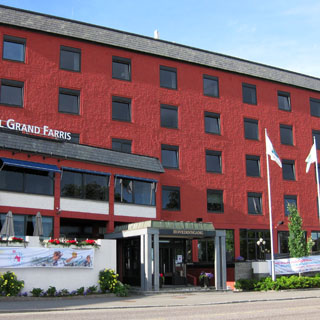
Compared to all the others, this room was enormous. Behind me is a separate sitting room.






Larvik is the birthplace of Thor Heyerdahl, and there was a memorial statue of him.


Whale beef is on the menu. Should I? I do.


Norway seems to be the template for the look of the upper midwest and central states in the U.S. The small towns are often arranged the same--with less reliance on a town square, and more on a main street. The barns are painted red and houses are white. Houses and even quite large buildings are made of wood with plank sides. Of course, there are also differences, but I felt much more at home in the countryside of Norway than any other country I rode through. It all feels familiar.
The major highways in Norway are toll roads. But the ever-enlightened Norwegians have excepted motorcycles. I was able to pass through the e-lane without stopping. Nice. Of course, there's also a real benefit to autos. It takes a motorcyclist at least five-times longer to get through a toll booth when you consider all the glove removal and then digging for a wallet and then putting the gloves back on. And, why do toll booth attendants always insist on giving you the bills first, and then pouring the coins on top? Please: coins first, and then bills. Otherwise it will likely all get spilled on the pavement.
 Sweden
Sweden
Tanum. This was a museum of the bronze age and was centered around artwork and symbols that had been carved into the large flat rocks of the area.
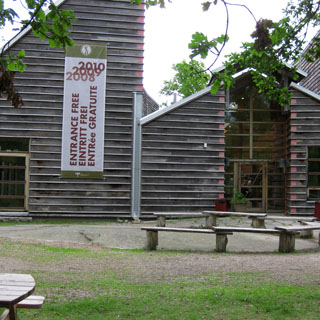


Today was Summer Solstice. A maypole (or whatever it might be called in Sweden) was being prepared. The festivities were planned in a few hours, but I did not wait to see them. Anyway, I was impressed by the large pile of daisies.

Kungsbacka.
This hotel seemed to be more of a convention facility, but it was centrally located in Kungsbacka, and was quite nice. I never would spend too much time hunting for a hotel.

This maze was next to a church. I solved it by looking at it, but didn't walk it. It is intended to put you in a contemplative mood (presumably of a religious nature).







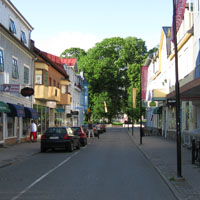

Problems with the Stelvio? None, with the exception of the trivial. The left mirror loosened too much that it flopped in the wind. The standard tool bag contained nothing that fit, so I picked up this rather nice little adjustable wrench at the next service station, and then donated it to the tool bag.




 Denmark
Denmark
It would have been easy to stay on the 'A' roads (freeways), but then I wouldn't have seen much of anything. I generally had a good feel for which secondary roads to take so that I would eventually hook back to the 'A'. On occasion I guessed wrong, but mostly it worked.


We're back in the land of steeples with a simple folded roof.

A beautiful house.
I crossed any number of striking bridges. Unfortunately, only a few gave me a chance to take a photograph.
This boat wasn't as large as the one I took to Norway.


 Germany
Germany
Bad Oldesloe. It was good to stop somewhat earlier so I could figure out where I wanted to go next.










The idea was to ride south with a somewhat easterly slant. I might even cross into the Czech Republic, and would certainly enter Austria before crossing back into Italy. That was the plan. It was a good one.
Lauenburg (on the Elbe).

Hösseringen. This was a small village with a natural park nearby. You wouldn't expect to find such a large and nice restaurant. As seemed to always be the case, I was eating at a time when nobody else was, so the place was empty.

I have no idea what I ordered, but it was especially good.
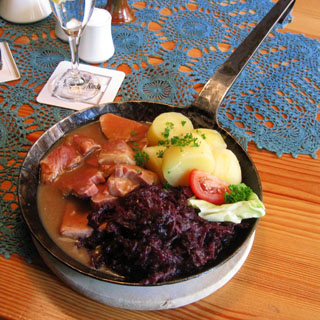


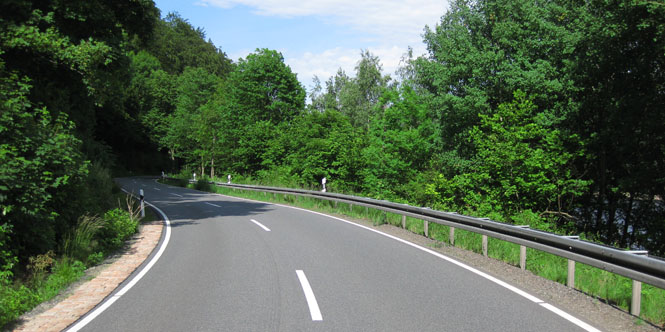
Bad Lauterberg.
Freidland. What a nice little town this is. The hotel turned out to be a much larger and nicer place than I expected when I first pulled in.
As with all motorcycle trips, once I parked the bike for the evening, I would never start it up until the next morning. If I wanted to go somewhere, walking was the only way I would consider.









That's France across the Rheine river; I'm standing in Germany. There's a freeway on each side, and hardly any bridges between the two. I ended up riding all the way to Basel Switzerland before I crossed the river.
 France
France
After some false starts, I finally found a road that was heading in mostly the direction I wanted.
Road numbers. You'll find these numbers on maps, and you might think that you could easily use those numbers to navigate through the country. You would be wrong. As was the case in all the countries I was in, these numbers are used only to identify the roads, but they are clearly not intended to be used for navigation. The large highway number signs common in the U.S. are non-existent. And even if you do spot the occasional number on the side of the road (as seen below), you should not expect to continue to see those numbers when the road enters a town. So, how does a person navigate long distances? How do you know which roads to take? The answer is, you must memorize the towns along the way. Roads were never identified as North or South or East or West. Again; knowing the next town down the road is the only way to tell.

Carspach. This little town was about a mile from my country hotel.






A rail viaduct across a broad valley.

This was the main reason for my long arc into France: the French Alps.



In France, motorcycles are not exempted. These are expensive tolls.



The Guzzi Stelvio is the ideal motorcycle for these roads. It has plenty of power, and a very wide torque band. I could keep it in 2nd gear and carve through all but the most convoluted roads.

Seez for the night. That day I had expected to cross over Little San Bernardino Pass. But, when I reached Seez, it was good time to stop for the evening. Naturally (as was typical for the entire trip), my plans that evening would change the next morning.
Do you see that dormer window on the roof? That's my room. Sixty steps to get there. I counted.

The view out my window was a good one.

D1090 was what I was intending in the evening; D902 was what I would take the next morning.

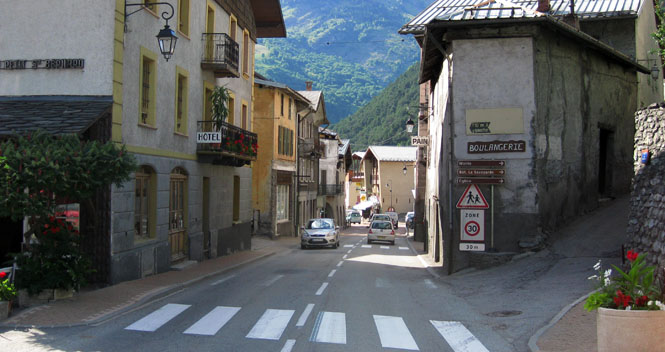








 Italy
Italy
The final miles were spent droning across the plains to Milano. There's not much to see from the Autostrada, but I didn't have time to take any other route.
The new owner, Alby, easing into the bosses seat. That's Tatiana looking very studious. It's time to pay.
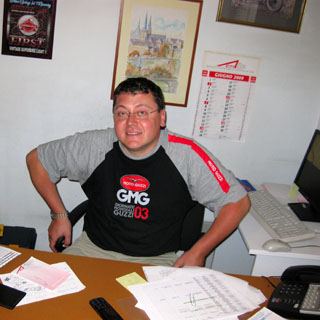
...before leaving from the train station back to Lecco and then Milano.

As mentioned earlier, the King Hotel lost my reservation, so they transferred me to one of their sister hotels not far from the Central Train Station.
Because of this, I used the bus service to the airport the next morning instead of the Malpensa Express train (which leaves from a different station).
There's not much to do on the flight--playing hangman on the seatback video screen is one.


A terrific trip. Thanks to Alis and Alby for making it possible!













